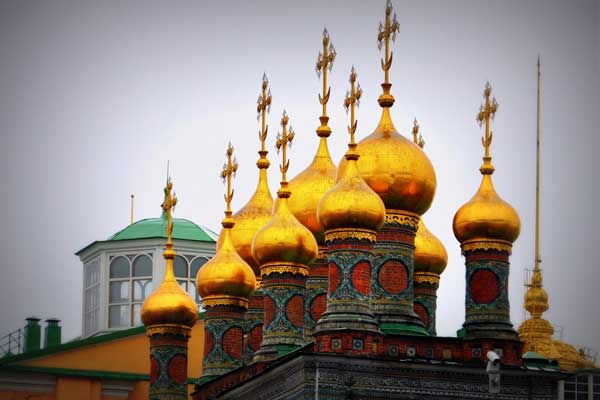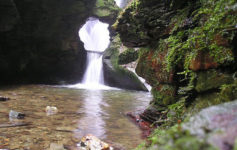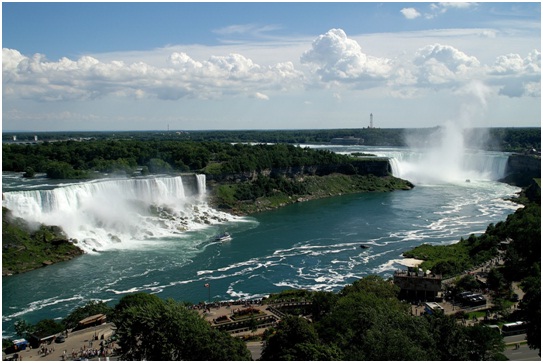In the center of the capital of Russia, on the high Borovitskiy hill above the Moskva River, one can find the striking Kremlin – a mighty symbol of Russia’s imperialistic and religious history and one of the largest architectural ensembles in the world that thrills and tantalizes whenever you see its towers, cathedrals, palaces and museums. In 1990, the architectural ensemble of the Moscow Kremlin and its treasures, Red Square and Aleksandrovski Sad (the Alexandrov Gardens) were declared a UNESCO World Heritage Site and although the majority of the Kremlin is closed off to visitors, it still remains Moscow’s main draw and the most visited tourist attraction.
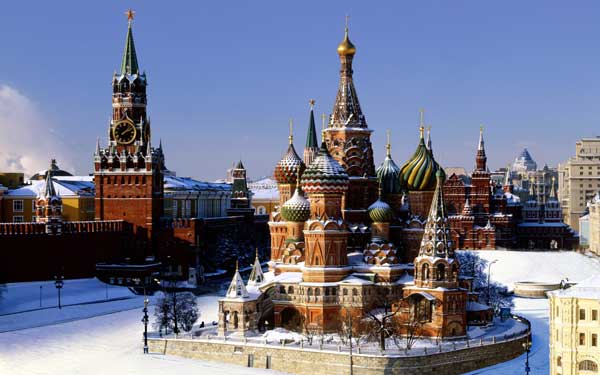
Short History of Kremlin
The first written mention of the Kremlin dates back to 1147, to the reign of Great Prince Yuri of Kiev, who is considered to be the founder of the Kremlin and the city of Moscow. However, its first white-stone walls and towers went up in 1367-688 and a rebuilt little more than a century later employed skillful architects from across Europe to shape the site its present appearance and dimensions. In 1485-1495 the Kremlin was totally rebuilt.
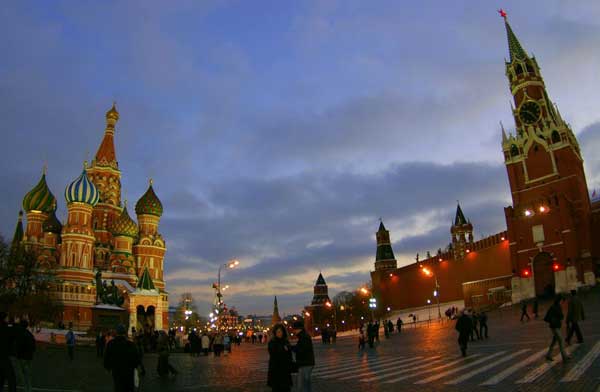
For centuries the Kremlin has been the center of the Russian statehood and the residence of many Russian Tsars and Patriarchs of the Russian Orthodox Church. Since 1991, the Kremlin has been the official residence of the Russian President, whose offices are located in the Grand Kremlin Palace. In 1995 the Kremlin was opened to visitors as a museum. It’s a unique monument of Russian culture and the political, historical and artistic quarter of the capital that never fails to entice visitors with its charm and beauty.
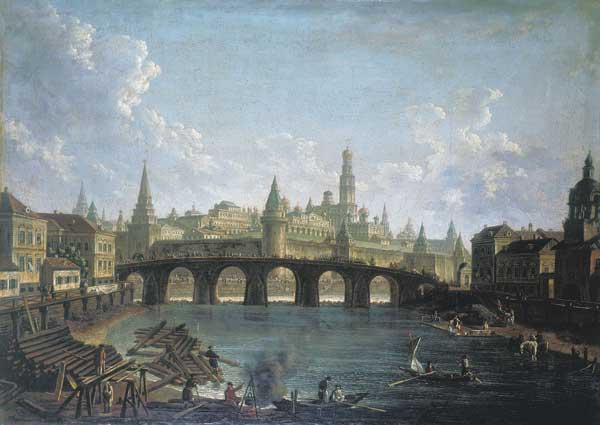
Must-See Attractions of the Moscow Kremlin
The impressive fortified complex of the Kremlin is composed of a fortified wall with towers, four palaces and four cathedrals and nearly every building inside the Kremlin belongs to history.
Star sights of the Moscow Kremlin are the Armory Chamber, the Cathedral Square and the Diamond Fund.
Armory Chamber
Stationed in a beautiful 19th-century building with the intention of housing the tsar’s treasures, the Armory now inhabits a part of this majestic complex, taking two floors and carefully decorated with ornamented columns. Originally the royal Russian arsenal where weapons were produced and stored, the museum now holds precious relics of Imperial stature, such as an impressive collection of gold-gilt carriages, armor, weaponry, and other important Russian relics, accrued over many eras. Do not miss the Fabergé egg exhibit.
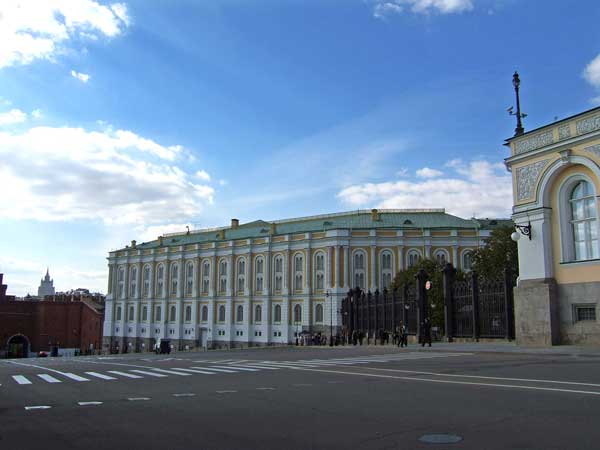
Kremlin’s Cathedral Square
The oldest area within the Kremlin, the charming Cathedral Square, also called ‘City of God,’ is where visitors head to see its six amazing cathedrals, most of them the work of Italian architects during the late 15th and early 16th Century.
The Assumption Cathedral is perhaps the oldest and largest church in the Cathedral Square that has seen the coronation of tsars and royal weddings and has been the seat of the Moscow Metropolitan. Fine frescoes and plenty of amazing icons dot the interior of the cathedral and at one time the Holy Virgin of Vladimir of the 11th-12th centuries was displayed here, though it’s now housed in the world-famous Tretyakov Gallery. Other famous cathedral in the area include: the Blagoveschenski (Annunciation Cathedral) dating back to the 15th century, which served as the private chapel for the tsars’ families; the Arkhangelski Cathedral (14th-17th cc.); and the separate bell tower of Ivan the Great with its exclusive golden cupola dominating the crosses, cupolas and roofs of the other buildings.
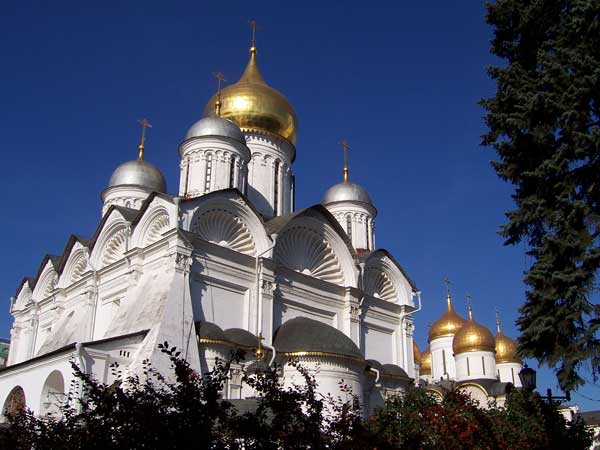
The Diamond Fund
This is another unique venue within the Kremlin, where you can find the crown jewels, including Catherine the Great’s coronation crown, the truly amazing 89-carat Shah diamond presented to Nicholas I by the Shah of Persia in the early 1800s, as well as the 190-carat Orlov diamond, a gift from one of Catherine the Great’s many lovers. A visit to the fund is only available with a 30-minute tour, which is held every 2 hours and is reserved ahead.
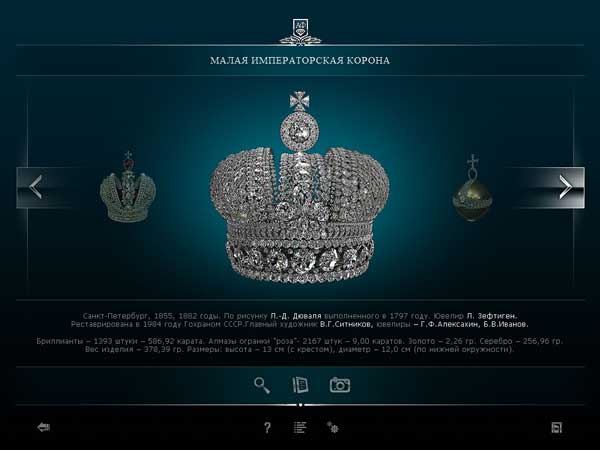
When to visit
The Kremlin is open six days a week, excluding Tuesday and is a must-see attraction for any visitor to Russia. The Kremlin is easy to reach by the Moscow subway and the closest metro stations are Borovitskaya and Biblioteka imeni Lenina.
Admission to the Kremlin is about $10 (350 rubles) and keep in mind that those with large bags have to leave them at the kamera khraneniya (baggage check) behind the stairs from the ticket counters in Alexander Garden, located along the western wall of the Kremlin.
